L.A.'s 18-hole Griffith Park Golf Links opened in 1914! Designed by Tom Bendelow and built by park staff, it was highly rated and home to the movie colony who filmed in the park. In 1923 George C. Thomas designed today's courses. @LACityGolf #LAGolfHistoryhttps://t.co/uamuafutgv
— Golf Historical Society (@GolfHistorical) May 22, 2023
Category: Los Angeles Country Club
The Opening of Los Angeles Country Club’s W. Herbert Fowler designed North course in 1921
It was with great anticipation that Los Angeles Country Club’s new North course at Beverly officially opened to members on Wednesday, August 10, 1921, making LA CC the first club in California to have adjoining eighteen hole golf courses. The new course had been “thrown open for practice,” in early June, and members had declared it couldn’t be improved.
The big event of the opening day was an exhibition match between green committee man, George C. Thomas Jr., who laid out the W. Herbert Fowler designed eighteen hole golf course, paired with Miss Doreen Kavanagh, Southern California and State amateur champion, playing against Southern California amateur champion and general manager of Catalina Island Company, Everett Seaver, and Northern California women’s champion, Miss Margaret Cameron.
Thomas and Kavanagh defeated Cameron and Seaver by a score of 3 up and 3 to play. Broken down, Thomas beat Seaver, 1 up, and Kavanagh beat Cameron 3 and 2, in what was called a keen match.
After the exhibition there was a dinner and dancing for 400. The day’s events were filmed.
The club’s Superintendent of Grounds for many years was Charles Cavanaugh. He and his crew did an amazing job building and rebuilding holes for both new golf courses in under a year, all while keeping 18 holes open for competition.
Alex J. Morrison, of Los Angeles Municipal, Catalina Island, and vaudeville, who had started at LACC as a caddy at Pico and Western, was appointed professional in July of 1921, replacing golf legend John Duncan Dunn and his team of British golfers. Morrison’s assistants were Vic Dalberto and Harry McNamara. Alex was soon back on stage and replaced at LACC by Alex Duncan, brother of earlier LACC professional James Duncan, and British golf legend George Duncan.
There was so much praise heaped on George C. Thomas Jr., for laying out the North course, that Herbert Fowler got more than a bit lost in the press releases. Fowler was a very busy man that summer, having completed the South and North courses for LA CC, the Ambassador-Rancho Golf Club, redesigns of Del Monte #1 and #2 (Pebble Beach), and designs for the Presidio, Olympic Club, Burlingame, Crystal Springs and others.
The North course still has 12-13 original holes laid out by Fowler that were reconstructed by William P. Bell to George C. Thomas Jr.’s redesign in 1928, when they also added five new holes. The 2010 Gil Hanse restoration was to the 1928 Fowler-Thomas-Bell version of the North, plus rebuilding the old Fowler par three 17th (replaced in 1928), which is now an extra hole.
On August 10, 2021, we can celebrate the design brilliance of Herbert Fowler, George C. Thomas Jr., and William P. Bell, along with the restoration by Gil Hanse. Happy 100th Birthday LA CC North!
©2021 J.I.B. Jones -golfhistoricalsociety.org
A Matter of Course – The Life of William Herbert Fowler 1856-1941
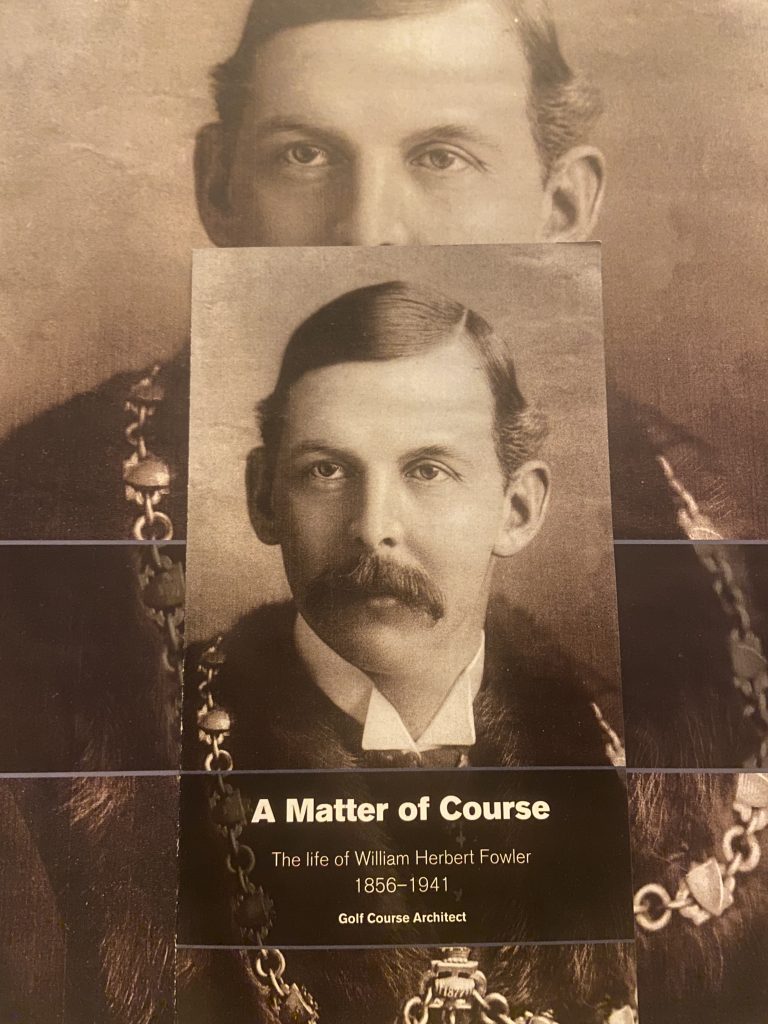
A Matter of Course is a new book written by Derek Markham and published by Markham & Truett.
The story of legendary golf course architect William Herbert Fowler. The book is a proper biography of a most interesting life, mostly well lived.
I contributed research to the chapter, “American Adventures,” written about Fowler’s work in California, which included Los Angeles Country Club, Pebble Beach and the Del Monte Hotel courses, the Presidio, Burlingame Country Club, the no longer existing Ambassador/Rancho Golf Club, Olympic Club, Lincoln Park, Sequoyah, Del Paso, Crystal Springs, Menlo C.C., and others!
This is a small print of 650 books that can be ordered by emailing Philip Truett:
philip@truett.co.uk
or ordering online from Browns Books
Protected: 110 Years of the Los Angeles Country Club at “Beverly.”
LACC’s SOUTH Course Turns 100!
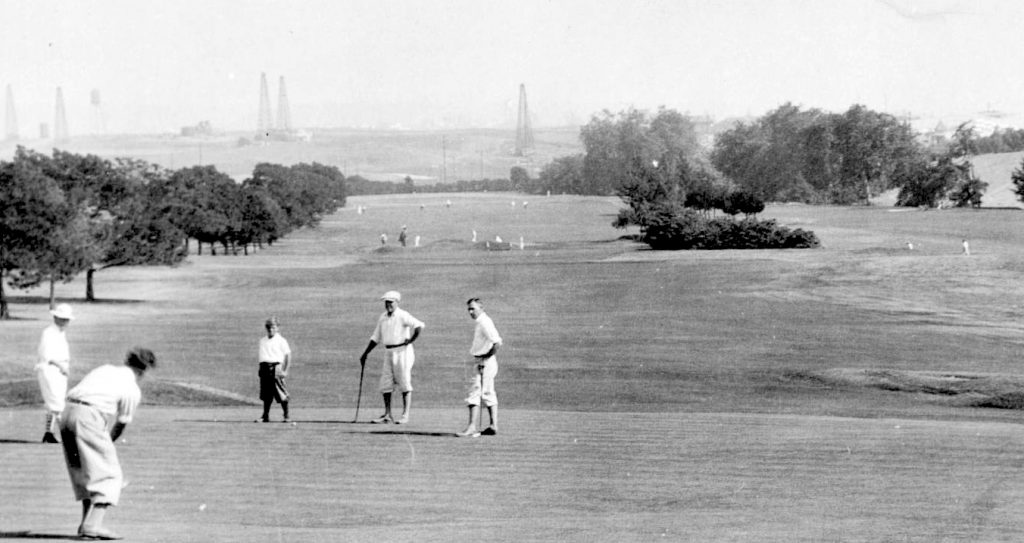
On Washington’s Birthday, February 22, 1921, the Los Angeles Country Club officially opened its new William Herbert Fowler designed South course.
Fowler was asked to keep as many of the existing grass fairways and grass greens from the original 1911 LACC Beverly links in his plans when designing two new 18-hole courses.
By 1920 the club had acquired additional land south of Wilshire Boulevard and Fowler remodeled the front nine and added nine new holes, seven of them on the new land and two north of Wilshire, to make the new South course. He also redesigned six old holes north of Wilshire, and added twelve new ones to make the North course that opened in August 1921.
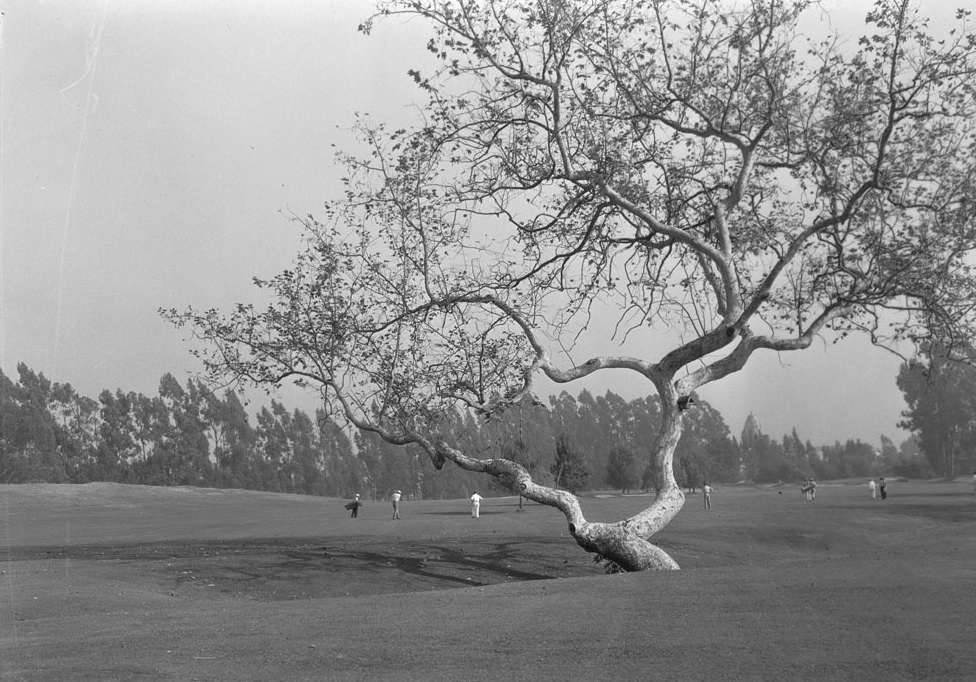
LACC, SCGA, PCGA and CGA legend Edward B. Tufts and new LACC member George C. Thomas Jr., led the green committee for both new courses and supervised construction with Greenkeeper Charlie Cavanaugh and his assistants. Another man at hand was LACC head professional and golf legend John Duncan Dunn who might have had a word to say about Fowler’s design.
(My great uncle Richard Brook worked under Dunn at LACC in 1920-21. His twin brother Tom worked at the Beverly Hills Hotel as golf instructor – small world!)
George C. Thomas Jr., wrote in Pacific Golf and Motor that, “the first nine of the South course will be nearly the same as the old lay-out, except for new greens on the second, sixth and seventh, and new tees on the eighth and the ninth.”
“The second nine will be all new holes.”
Before the South’s opening on the 22nd the final version of the Beverly course hosted the 1921 Southern California Open from February 6 to 8, using none of the new tees, greens or holes. The three-day event started with the pro-am, followed by two days of 36-hole medal play.
Unfortunately, the tournament was hampered by severe winds, up to 70 mile per hour and super dry conditions, making it nearly impossible to stop a ball from any height on the greens. It got so bad that George Thomas himself was out on the course drenching the greens to keep them playable.
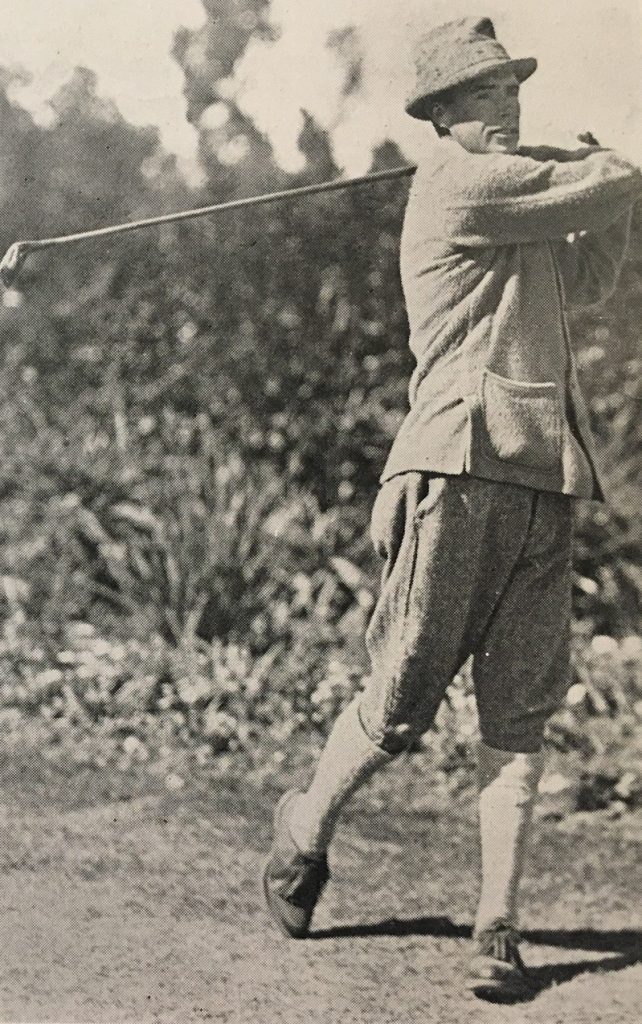
LACC’s ex-assistant professional from Carnoustie, Hutt Martin (297) won the tournament. American Eddie Loos (299) was 2nd, and LACC’s Everett Seaver (309) was low amateur finishing in 8th place overall. Leo Diegel had the low round of the tournament and claimed the course record of the South with a 70 during his 4th round. LACC member William Armstrong won the pro-am with Diegel. Armstrong donated the “bridge to the 18th.”
The new South course greens were perfect by February, but the fairways were still rock laden on the back nine and were not used in competition until after the Southern California Amateur in April.
The South course lasted through many iterations until it was redesigned in 2015 by Gil Hanse who retained parts of some original holes that we can still enjoy today! Thanks for the century!
©2021 jib jones – golfhistoricalsociety
Norman Macbeth Jr., ref. note
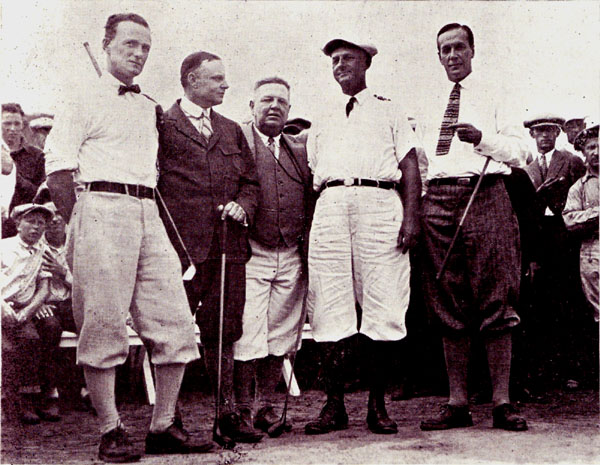
Norman Macbeth Jr., was born in Bolton, England in 1879, and grew up playing at Royal Lytham & St Annes golf club where he won the club championship three times while still in school. After an engineering apprenticeship in India with his father’s company he emigrated to Indianapolis, Indiana, in 1903.
Norman married American Lucia Holliday in 1907, and they moved to Pittsburgh where Macbeth played on the Oakmont Golf Club Leslie Cup team with W.C. Fownes Jr., and on the 1909 Pennsylvania State golf team with Albert Tillinghast.
#1 son was John Holliday Macbeth born in 1908. He drowned in 1919 while Norman was in France working for the Red Cross during WW I.
The Macbeth’s moved to Los Angeles in 1910, with Norman working for the Riverside Portland Cement company. The company supplied cement for the Los Angeles Aqueduct and half the roads that we still drive on in the 21st century.
#2 son was Norman Macbeth III or Jr., born in Los Angeles in 1910. He was also a golf champion and lived until 1989.
Norman joined the Los Angeles Country Club and won numerous amateur golf titles over the next several years.
#3 son was Alexander born in 1915 and died in May 1920. Cause unknown.
Macbeth volunteered for the Red Cross in France, where he drove an ambulance, and managed to play at least one round of golf!
He returned to Los Angeles in August 1919, and was soon elected chairman of the Green committee creating the new Wilshire Country Club golf course in Hancock Park, which became his non-working life’s passion.
Norman was also playing a full schedule of club tournaments at Los Angeles Country Club where noted golf architect John Duncan Dunn was professional and George C. Thomas Jr., and Herbert Fowler were making history designing and building the new North and South courses.
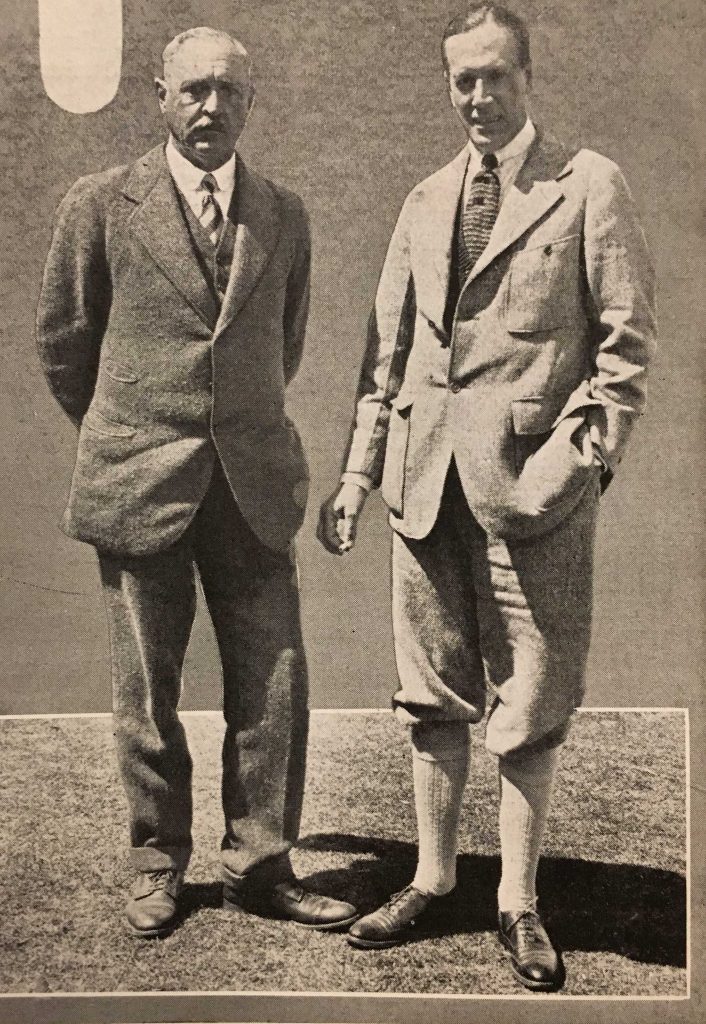
Wilshire Country Club green committee.
The new Wilshire Country Club course was completed and open for member play in December 1920. Macbeth led the club team and green committee and was elected to the USGA Green Section. He was also a member of the Los Angeles Traffic Commission.
Norman and Lucia had an uncontested divorce in 1928.
In 1934 Norman married Lucille Chandler, ex-wife of Wilshire CC founder Raymond Stephens. They were parents to Norman Jr., and Lucille’s son and daughter.
At the time of Norman’s death in 1940, he also left two brothers and five sisters in England.
J.I.B. Jones – January 2021.
©2021 golfhistoricalsociety.org/jibjones
Golf Balls of the 20th Century: The Transatlantic Bomber
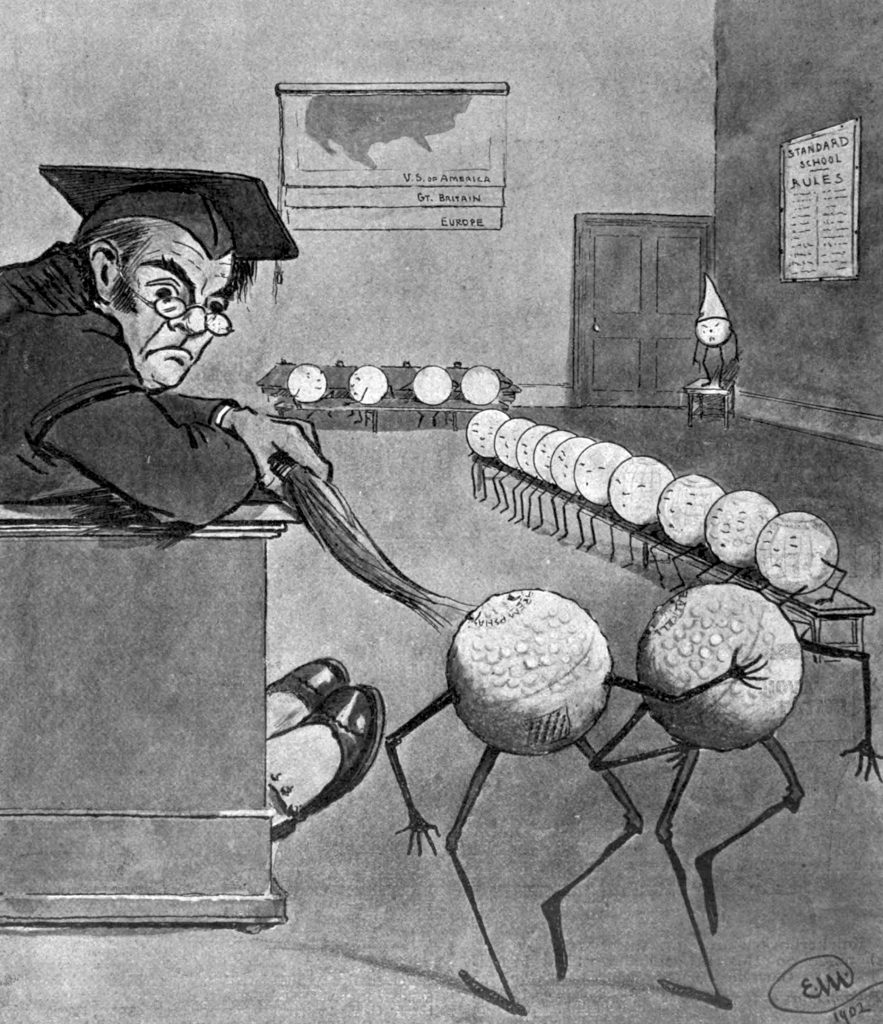
By 1902, golf was changing. The new rubber-filled Haskell and Kempshall golf balls were replacing the long-used, and loved, gutta-percha balls. The old gutta was shorter on the carry, but more controllable. The new balls were known as “bounding Billies,” because they bounced and ran through bunkers and hazards with nothing able to stop them. Amateur champion Walter J. Travis actually drove a Haskell 382 yards on the Garden City links in January 1903.
In Southern California, where long dry summers meant hard-pan fairways, summer golf nearly ceased to be when players opted for the new longer-distance rubber balls.
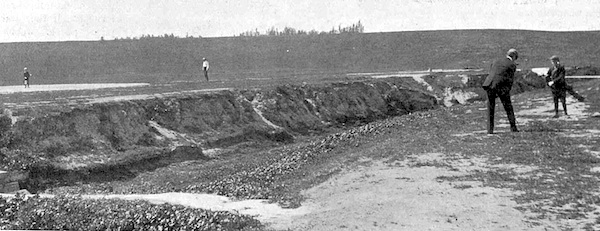
At the Los Angeles Country Club, at Pico and Western boulevards, the club’s bowling alley and ping pong tables replaced summer golf until irrigation arrived about ten years later.
_________________
Here is a short piece from Mr. J. L. Low, published in the Athletic News (UK), Summer 1902, about the impact of the Transatlantic Bomber:
“The mind of the American man is exceedingly cunning, and he has devised a ball which makes it easier for the ordinary mortal to go round a golf course in a low score.
Let us admit this fact, and say, ‘We acknowledge that your ball is easier to play with than a golf ball, but you need not make any more, as we don’t wish the game made easier, our links being laid out to test the strength and skill of a golfer playing with a ball made out of certain recognized material.’
Or there is another course open to us, and that is to counteract this unfortunate inventive power of making the game easy by making the courses longer and more difficult. On courses which are at present of good length the holes would need to be lengthened by about thirty yards in order to give good driving its former advantage ; and there are other ways of making the rubber ball tremble within its skin.
But of the two ways of escaping the curse of these new balls and restoring the game to its old position as one of the most difficult of games, the former seems the more simple and less expensive ; the cost of altering our courses is, in fact, too great to contemplate.”
“In the meantime it cannot too extensively be advertised that scores made with patent balls are only equal to scores made with gutta balls from ‘short tees.'”
From Mr. J. L. Low in the Athletic News (UK), Summer 1902. Transcribed by J.Jones – ©2019 golfhistoricalsociety and jibjones All rights reserved.
